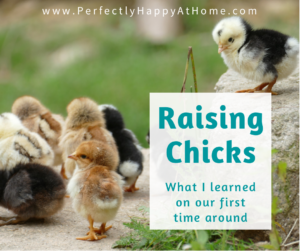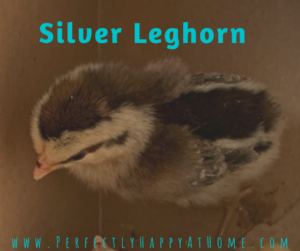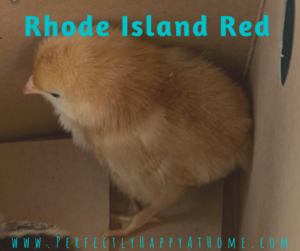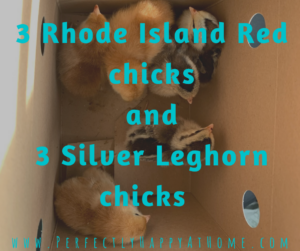 When I think about my backyard chickens, I think back to the very beginning. We got them when they were a mere two days old. We bought ours from a small, family run feed store that is local to us, but they are also available at larger stores like Tractor Supply. Often, they can be found for sale by other urban or hobby farmers who are local to your area. I even know people who purchase them by mail order!! Before we got our own baby chickies, I hadn’t even known that was possible. What a world opened up to me simply by starting our homestead journey with baby chicks!!
When I think about my backyard chickens, I think back to the very beginning. We got them when they were a mere two days old. We bought ours from a small, family run feed store that is local to us, but they are also available at larger stores like Tractor Supply. Often, they can be found for sale by other urban or hobby farmers who are local to your area. I even know people who purchase them by mail order!! Before we got our own baby chickies, I hadn’t even known that was possible. What a world opened up to me simply by starting our homestead journey with baby chicks!!
I did a lot of research prior to bringing our cuties home, because I knew I would be devastated if anything happened to them that I could have prevented just by gaining a bit of an education beforehand. I bought and read books (for a list of my favorites, please head over to How I Became A Chicken Mom), I asked friends who already had chickens for advice, and I also joined a few local Facebook groups that are all about backyard chickens. Gosh did I absorb a lot of information! And I am glad I did, because when we finally brought our fragile baby chicks home, I felt prepared.
We had set up their big, plastic tub (a storage tub without the lid) with wood shavings, a chick waterer, a chick feeder, a bag of chick starter feed, a thermometer taped on the side of the tub, and of course the heat source. Note: Some people prefer a heat plate to heat lamp and bulb due to lessened fire danger. The clip-on heat lamp and bulb setup is the cheaper of the two options, and what we chose for the first time around, but if I had it to do again, I would have gone with the safer heat plate. (Live and Learn!) All of these things are imperative to the chicks’ survival. Here’s a checklist for you to download and print, so you can make sure to gather everything you’ll need if you are planning to get chicks for the first time. (Or if it’s just been awhile!)
I also learned that chick behavior is very telling of their well-being. Here are some pointers that were taught to me by a dear chicken mom friend:
- Active chicks that are alert and moving around the enclosure are happy and healthy.
- Chicks huddled under the heat source are too cold.
- Chicks that are far away from the heat source and/or are panting with wings slightly lifted away from the body are too hot.
- Little chick backsides should be dry and free from feces. If feces gets stuck to their feathers, they can actually perish due to a condition called “pasty butt” (I’m not kidding…it’s really called that, and it’s really that serious!). I read that a simple soak with a warm, wet cloth, followed by a gentle wiping with a cotton swab should do the trick to clean your chick’s fluffy backside right up and have him or her feeling back to normal. I had to do this with one of ours, so I am thankful I had known ahead of time to look for this condition. It’s one that needs to be caught within hours…baby chicks are so fragile!
- Some “peeping” is normal and good. (And oh so adorable!) Excessive peeping can mean there is a problem of some sort (out of food or water, perhaps), so it’s important to know to look for one. Sometimes they even get “lost” facing the corner and forget where everyone else, and the heat, food, and water are. in this case just put them back with their friends. Speaking of friends, baby chicks need a flock to be happy. Always start with at least four chicks.
- Handling babies with gentle hands is an important key to getting them socialized and imprinted on humans. If you plan to have them as pets, like I do, this is critical. It is how they will learn to trust you. But do be careful to pay attention to how often and the length of time they are handled, as they are physically fragile and can become overwhelmed.
Whew! I know, that seems like a lot to remember if you’re going to be a first-time chicken mom like I was. That’s why I read and re-read books and instructions many times over…until I was comfortable with my knowledge base. I set up the whole enclosure before we shopped for chicks. I wanted it to be ready for them to come home to…I guess you could say i was literally “nesting!!” After all, that is where the phrase came from, and now I understand it even better, heehee!
I know I have mentioned a heat source and keeping the chicks warm several times already. If you’re unfamiliar with what exactly that entails, I want to break it down a little further. I’ll go by age in weeks, so you can see how their needs change as they grow.
- Hatch-1 week old=maintain 95 degrees F temp at all times
- 1-2 weeks=maintain 90 degrees F at all times
- 2-3 weeks=maintain 85 degrees F at all times
- 3-4 weeks=maintain 80 degrees F at all times
- 4-5 weeks=maintain 75 degrees F, but their “big chick” feathers are coming in now, so a few times per day it is ok to have them explore away from their heat source for short intervals (keep them in sight, as they’re still quite fragile)
- after 5 weeks, AND once they are fully feathered with their teenage feathers, they can move to their permanent outside coop. You will miss them being inside, but by this time, they are starting to be messier and stinkier, and probably more crowded, so everyone will be happy they are in their own coop.
Speaking of moving them, at our house, we needed a transition coop. Once our chicks got to be a few weeks old, they became dare devils and would flutter up and out of the plastic bin. Not good…they can get into all kinds of trouble out of their home, not to mention that they can’t usually get back in, so they get cold, and loud, quickly. What I did was retrofit a dog crate we have. It is closed on all sides and the roof, too, so there were no escapees. I cut cardboard to fit and zip-tied it to the walls of the crate (not the roof), in order to contain the wood shavings which would have otherwise been kicked all over my kitchen. Yuck. It worked out pretty well. By the way, we did keep them in our kitchen the whole time, because it was winter. Many people choose to keep their chicks in the garage to avoid the smell, but I knew in the winter it was too cold for them even with their heat source. To avoid the inevitable smell, we changed the wood chips every other day. I totally recommend this method, and an alternative if you don’t have a dog crate handy, would be to lay a piece of plastic lattice over your original container when they start to fly. The chicks also get used to your family’s voices so well when they are near you all day!
OK! Now you know everything I learned about raising baby chicks! I am positive there is more to learn, and I will expand my knowledge further the next time we get chicks, and keep you all updated! They are just so much fun. The elements of joy and cheerfulness they add to your house is so sweet. I always sat and had a cup of coffee with the baby chickies in the kitchen before we started school each day…call me crazy, but it was quite the enriching experience! I think I talked about our babies to everyone I know. My mom even gave me a chickie Christmas tree ornament. It was Thanksgiving, and then Christmastime when they were in our kitchen. These soft, fuzzy little creatures wiggle their way into your heart really quickly…and make it all a-flutter. I can’t wait to see your baby chick pictures! Have a beautiful and joyful day!
